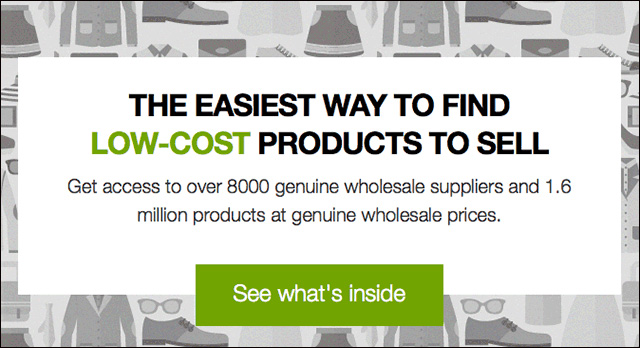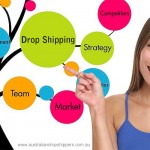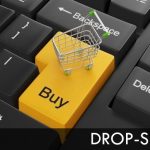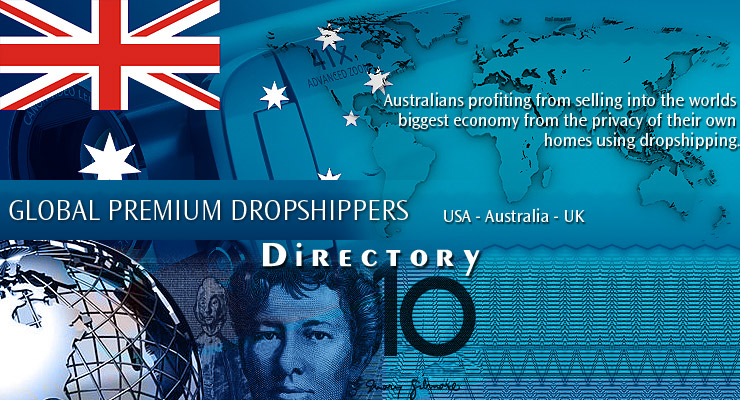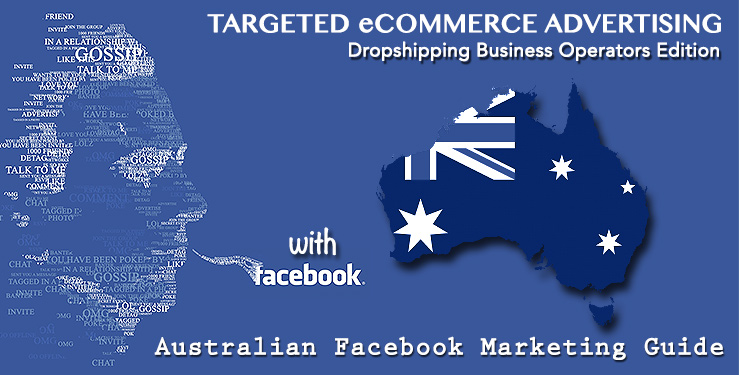
Facebook Marketing for Australian Dropshippers
Facebook Marketing for Australian Dropshippers explores the basics and more advanced concepts of social media marketing and advertising for drop ship ecommerce stores.
In early 2017, national newspaper The Australian published some elucidating statistics about Facebook usage across the Commonwealth. It so happens that Australia is the leading nation in terms of how often users check their social media feeds on a daily basis. The world average in this regard is 55 per cent; in Australia, however, 75 per cent of the 16 million active users check their newsfeed at least once a day.
The aforementioned report coincided with the opening of a new Facebook sales office in Melbourne; the main function of this office is to drive sales and advertising for the social media giant.
As of March 2017, the number of monthly active Facebook users in Australia climbed to 17 million, which is equivalent to 70 per cent of the population. For dropshippers and entrepreneurs whose business activities are focused on internet sales, the aforementioned statistics should be considered a call to action.
Chances are that the average dropshipper or e-commerce entrepreneur in Australia is already a Facebook user. Since seven out of 10 Australians are members of this social network, it stands to reason that the marketing opportunities offered by Facebook should be explored.
Understanding Facebook Advertising
In 2016, Facebook Inc. realized a revenue of nearly USD $28 billion; that is equivalent to AUD $34.8 billion. In May 2017, Facebook posted revenue earnings of $8 billion for the first quarter. The b ulk of this sizable income comes from sales of marketing and advertising solution. What dropshippers need to realize is that Facebook is a powerful ad machine, particularly for e-commerce operations. In other words, Facebook may be known as a place where friends and relatives connect; however, this social media behemoth makes its money from heavy marketing and advertising operations.
ulk of this sizable income comes from sales of marketing and advertising solution. What dropshippers need to realize is that Facebook is a powerful ad machine, particularly for e-commerce operations. In other words, Facebook may be known as a place where friends and relatives connect; however, this social media behemoth makes its money from heavy marketing and advertising operations.
The first step in understanding the Facebook ad machine is to think about it in terms of demand. Google is an even larger online advertising platform than Facebook, but the former fulfills an existing demand while the latter generates demand. To explain it in a different light, Google mostly responds to search queries and browsing behaviour with advertising; Facebook, on the other hand, takes advantage of user sentiment to showcase products that could be of meaning.
For dropshippers, Facebook is a platform where goods can be exhibited and put on display for the purpose of potentially adding value to the lives of shoppers.
What Facebook offers to dropshippers is a value proposition. Dropshipping is an e-commerce activity; according to statistics compiled by WebAlive, the Australian online retail sector is expected to generate AUD $35.56 billion in 2017, a sizable increase from AUD $26.77 in 2013. Considering the previously mentioned Facebook activity statistics, it can be clearly inferred that advertising in this social network is in the best interest of dropshippers since e-commerce and Facebook seem to be growing simultaneously.
There are 10 steps that dropshippers should follow for the purpose of gaining the most from Facebook advertising:
1 – Getting Started With Facebook for Business
The first step is to create the right Facebook account before evaluating advertising options. Although there is a way to begin advertising from current personal profiles, it is better to establish a Business Manager by visiting https://business.facebook.com/ and getting acquainted with Ads Manager and Power Editor.
Beginners should stick to Ads Manager before they tackle Power Editor. Ads Manager is the default offering in the Facebook Business Manager system, and it will feel familiar to those who have already created Google AdWords campaigns.
Some major e-commerce platforms offer subscribers special accounts that they can use to simplify the campaign creation process from within Ads Manager; these special accounts act as an overlay that incorporates relevant features from Power Editor.
2 – Getting to Know the Facebook Pixel
Dropshippers who are acquainted with the process of installing a Google Analytics tracking code in their websites will have no problems understanding the Facebook Pixel, which is similar essentially a tracking code or homing beacon inserted in e-commerce websites.
The Facebook Pixel serves many purposes; for dropshippers, the main objective is to connect an e-commerce shop with the aforementioned Business Manager account. Once the Pixel starts
Drop Ship Business Audience Targeting
tracking visitors and their behaviours, audiences can be properly segmented and targeted with effective Facebook advertising. Some examples of specific segments include visitors who arrived via social media ads and returned to an e-commerce shop various times over the course of two weeks.
Generating a new Facebook Pixel requires visiting Ads Manager and clicking on the eponymous tab on the left side of the screen, followed by selecting “Create a Pixel.” From here on, users should name their Pixel with terms associated to their dropshipping venture, and this should be a name that is easy to remember. At this point, Facebook will present a window with terms and conditions that must be accepted before the JavaScript code is generated.
Even though the Facebook Pixel code can be displayed and retrieved from Ads Manager anytime, it is a good idea to copy and paste into a plaintext file kept in handy local and cloud storage folders.
Installation of the Facebook Pixel can be accomplished by means of plugins or manually. WordPress users should first install the PixelYourSite plugin, which includes WooCommerce integration. Manual installation should be left to those who are familiar with coding and website development; it is a bit trickier than the Google Analytics tracking code. Essentially, the Pixel code should be pasted on each page, between the lines and . What is even more complicated is to incorporate standard events.
Each Pixel consists of base code and nine standard events, which are variations of e-commerce and marketing behaviours. The following is a list of events:
fbq(‘track’,’AddPaymentInfo’);
fbq(‘track’,’AddToCart’);
fbq(‘track’,’AddtoWishlist’);
fbq(‘track’,’Complete Registration’);
fbq(‘track’,’InitiateCheckout’);
fbq(‘track’,’Lead’);
fbq(‘track’,’Purchase’);
fbq(‘track’,’Search’);
fbq(‘track’,’ViewContent’);
The standard events above can be inserted before the line in the Facebook Pixel code for the purpose of establishing a variation; for example, the fbq(‘track’,’Search’) event tracks users who conduct searches on an e-commerce website.
Instead of having to learn JavaScript programming, dropshippers who use e-commerce platforms and plugins should check their settings section to see where they can enter their Facebook Pixel ID, which can be found on Ads Manager after it has been created; not all platforms will support the nine standard events, and not all e-commerce websites will have search or wishlist functions.
Proper installation of the Pixel code is crucial to Facebook advertising success; therefore, it is a good idea to seek the assistance of web developers and other professionals who can help in this regard.
3 – Choosing the Right Facebook Ads
 Most dropshippers start their journey into Facebook marketing by boosting posts, which is essentially an affordable way to extend the reach of organic updates. Depending on the desired reach, boosting a post tends to be an affordable strategy, but it should mostly be reserved for branding purposes. Unlike the rest of the ads described below, posts that are boosted will not interact with the Facebook Pixel.
Most dropshippers start their journey into Facebook marketing by boosting posts, which is essentially an affordable way to extend the reach of organic updates. Depending on the desired reach, boosting a post tends to be an affordable strategy, but it should mostly be reserved for branding purposes. Unlike the rest of the ads described below, posts that are boosted will not interact with the Facebook Pixel.
Beyond boosting posts, dropshippers should consider the following Facebook advertising options:
Domain Ads
These ubiquitous Facebook ads are also known as “Desktop” or “Right-Side Column” ads. The structure of these ads is simple: an image, message and a link; for dropshippers, domain ads are often the most effective due to their premium placement on the Facebook Newsfeed and Timeline.
Carousel Ads
Dropshippers who wish to focus on various products can present prospective shoppers a range of items on Facebook by means of carousel ads. One advantage of these ads is that they will automatically increase the number of times the most popular item is displayed.
Offer Ads
These are excellent ads for dropshippers who have already managed to build an engaged audience. Facebook offer ads entice shoppers with an option to click and redeem a coupon with an expiration date.
Video Ads
The purpose of Facebook video ads has more to do with branding than with direct selling; however, vertical video ads are gaining popularity among e-commerce business owners who wish to retarget visitors who have previously arrived from domain, offer or carousel ads.
Lead Ads
As their name suggests, the main function of these ads is to collect information from prospects within Facebook. The process is highly automated since the information is filled with personal data stored in users’ profiles. Lead ads tend to be more effective than sending users from Facebook to a landing page where they have to fill out online forms. Another advantage of these ads is that they easily integrate and synchronise with customer relationship management (CRM) systems.
Canvas Ads
These next-generation form of advertising is highly mobile and highly interactive. Creation of canvas ads starts in the regular Facebook profile page under the Publishing Tools tab; once a canvas has been created, the link must be entered in the Ads Manager campaign tab. These ads are ideal for dropshippers who manage multiple products in various configurations such as fashion garments that come in different sizes, colours and styles.
Dynamic Product Ads
After successful domain and carousel ad campaigns, dropshippers can graduate to Facebook dynamic ads, which take information collected by the Pixel for the purpose of serving ads that are displayed according to the behaviour of prospective shoppers. The three behaviours that prompt displays are: shopping cart abandonment, viewed content and purchases made.
Branded and Sponsored Content Ads
Dropshippers who apply content marketing to their promotion strategy stand to benefit the most from branded and sponsored ads on Facebook. These ads consist of a commercial partnership between dropshippers and established Facebook brands that are known as influencers due to their elevated profiles and sizable followership. In the Ads Manager, branded and sponsored ads can be designed by means of selecting the handshake icon.
4 – Reaching New Prospects
When it comes to targeting and reaching new prospects on Facebook, dropshippers should take a gradual and measured approach. Facebook makes this process easy and effective with select  targeting options. Getting started is a matter of choosing between broad or specific targeting; the former is recommended for new dropshippers while the latter is better when targeting at least 10,000 Facebook followers. The problem with narrowing too much is that advertising budgets tend to be consumed very quickly.
targeting options. Getting started is a matter of choosing between broad or specific targeting; the former is recommended for new dropshippers while the latter is better when targeting at least 10,000 Facebook followers. The problem with narrowing too much is that advertising budgets tend to be consumed very quickly.
Facebook also offers interest-based and behavioural targeting. Once again, newcomers would be better off with interest-based targeting since the source information tends to be more sincere. With behavioural targeting, there is a great advantage in selecting Facebook users who have made online purchases in the last couple of months.
Although dropshipping is an economic activity that knows no boundaries, some entrepreneurs may wish to target only local prospects for the purpose of offering better customer service. To this effect, Facebook advertising can target prospects by geographical location, gender and age. More importantly, dropshippers who offer free delivery to certain regions should certainly organise campaigns based on geographical targeting.
5 – Advanced Marketing With Retargeting
The power of the Facebook Pixel and Ads Manager can be leveraged with retargeting, which is a tactic that consists of reaching prospects and existing customers by means of strategic ads. To accomplish this, dropshippers must first build custom audiences, which are made of Facebook followers who have previously visited an e-commerce store or interacted with ads. Retargeting should be considered a form of maximising return on investment because it handles website visitors as if they were qualified leads.
The most basic custom audience will feature all visitors who arrived at an e-commerce shop via a Facebook domain ad. The process of creating a custom audience can be accomplished from Ads Manager and by selecting the option below the Pixel radio button. To start off with, dropshippers should select the “Anyone” option from the drop-down menu and then indicating a time parameter; the default 30 days is a good option, and it can be further augmented by specifying visitors who spent meaningful time on the site, meaning those who did not contribute to a high bounce rate.

Advanced Marketing Strategies
Another recommended custom audience group can be organised based on engagement for those dropshippers who are active on Facebook and who apply content strategies to their promotional and branding efforts. Likewise, Facebook followers who watch a video ad more than once or who promptly respond to lead ads can be grouped as a part of a very receptive custom audience.
6 – Marketing and Retargeting Automation
With dynamic ads, Facebook can be leveraged to carry out marketing automation, which is a major timesaver for dropshippers who work on their e-commerce ventures on a part-time basis. Similar to installing a Facebook Pixel with standard events, getting started with Facebook marketing automation requires some level of coding, which means that many dropshippers will be better off seeking assistance from web development professionals.
 Prior to designing dynamic ads, the product catalogue from the e-commerce shop must be uploaded to the Assets section of Ads Manager. This catalogue is a data file that is often compiled in CSV or XML format. Some e-commerce platforms that integrate with Facebook have a product feed overlay that makes this part of the process easier. The next step is to determine how often Ads manager should fetch a new version of this product feed; additionally, the currency and item prices can be set.
Prior to designing dynamic ads, the product catalogue from the e-commerce shop must be uploaded to the Assets section of Ads Manager. This catalogue is a data file that is often compiled in CSV or XML format. Some e-commerce platforms that integrate with Facebook have a product feed overlay that makes this part of the process easier. The next step is to determine how often Ads manager should fetch a new version of this product feed; additionally, the currency and item prices can be set.
Once the product feed is set up in Ads Manager, dynamic product ads can be created based on one more more items from the feed. Facebook offers filters such as brand, price and category that will make it easier for users to be targeted; moreover, keywords can be used to augment discovery. The magic of dynamic ads is that they will try to complete a purchase within Facebook, which is highly attractive to many users. Dynamic ads will also automatically retarget conversions and prospects who have engaged with the ads; this is a powerful marketing automation feature that lets dropshippers focus on other aspects of their business ventures instead of spending all their time on marketing.
7 – The Power of the Facebook Sales Funnel
The sales funnel is a marketing strategy that dates back to the early 19th century. The modern funnel follows a marketing path from awareness to purchase; in between, shoppers are likely to formulate opinions, consider alternatives and evaluate their preferences.
Before getting into the details of the Facebook sales funnel, dropshippers must first consider their advertising budgets. In general, it is better to allow Ads Manager to figure out automatic bidding on cost-per-click basis in the beginning. A rule of thumb is to stick to the CPC formula until 100 purchases or conversions have been accomplished; after this milestone, dropshippers may switch to branding and CPM, which stands for cost per thousand ad impressions.
Once a campaign budget has been established, a sales funnel can be mapped out. The following is a sample Facebook funnel:
* Content is posted to Facebook and blog.
* Domain ad or sponsored content campaign is set to promote content.
* Facebook Pixel determines custom audience.
* If purchase is successful, retarget with appreciation.
* If purchase is not successful, retarget with enticement.
* Investigate lookalike audiences proposed by Ads Manager and begin new campaign with the same content piece.
Depending on the analytics revealed by the Facebook Pixel, the funnel can be expanded and modified to include upselling.
8 – Marketing With Messages
It is important to note that Facebook is very focused on developing its Messenger and WhatsApp properties; the reason for this focus is that CEO Mark Zuckerberg is rightfully convinced that we are going through a second era of instant messaging. For Facebook, the proof is not in the pudding as much as it is in WeChat, the Chinese messaging application that has revolutionised the way people interact online.
are going through a second era of instant messaging. For Facebook, the proof is not in the pudding as much as it is in WeChat, the Chinese messaging application that has revolutionised the way people interact online.
Facebook Messenger may not be at the WeChat level just yet; however, the company intends to keep developing this app. For dropshippers whose target audiences tend to be younger, sponsored message ads on Facebook Messenger can be part of an active sales channel, but this could also mean having to offer customer service via the app or with a virtual assistant such as Kit.
9 – Prohibited Facebook Advertising practices
Needless to say, dropshippers should carefully review the Facebook Terms of Service as they apply to marketing and advertising. Some general rules of thumb include: the promotion of tobacco and alcoholic beverages should be considerate in so far as the age and geographic location of the target audience, pharmaceutical products cannot be promoted in this social network, and any items related to dating and personal relationships need approval prior to posting.
10 – Evaluating Facebook Ad Reports
The Power Editor feature of Facebook Ads managers gives dropshippers access to reports they can review for the purpose of evaluating ad performance and comparing with previous results. The basic parameters of the reports include: campaign, objective, delivery, cost per click, cost per impression, and reach. The idea is to determine the return on investment. The recommended reporting frequency for dropshippers is once per month. Entrepreneurs who use e-commerce platforms will have rich reporting that gives them greater insight into the performance of their Facebook ad campaigns so that they can improve their sales funnels and advertising materials.
In the end, the 10 steps listed herein should be used as an introduction for dropshippers who wish to take advantage of the value proposition set forth by Facebook ads. It really pays to choose an e-commerce platform solution that integrates with Facebook for Business as it may cut down on the need to hire web developers. Once the Facebook Pixel and product catalogues are properly set up, dropshippers should take the plunge with a couple of small budget campaigns that feature domain ads. The idea is to optimise the process after the first report is evaluated and a marketing automation point can be established.
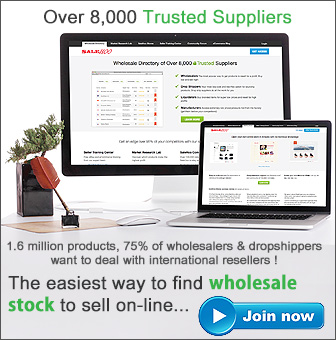
 Enter Here For A Free Preview Of The Largest Global Drop Shipper Index On The Net
Enter Here For A Free Preview Of The Largest Global Drop Shipper Index On The Net

